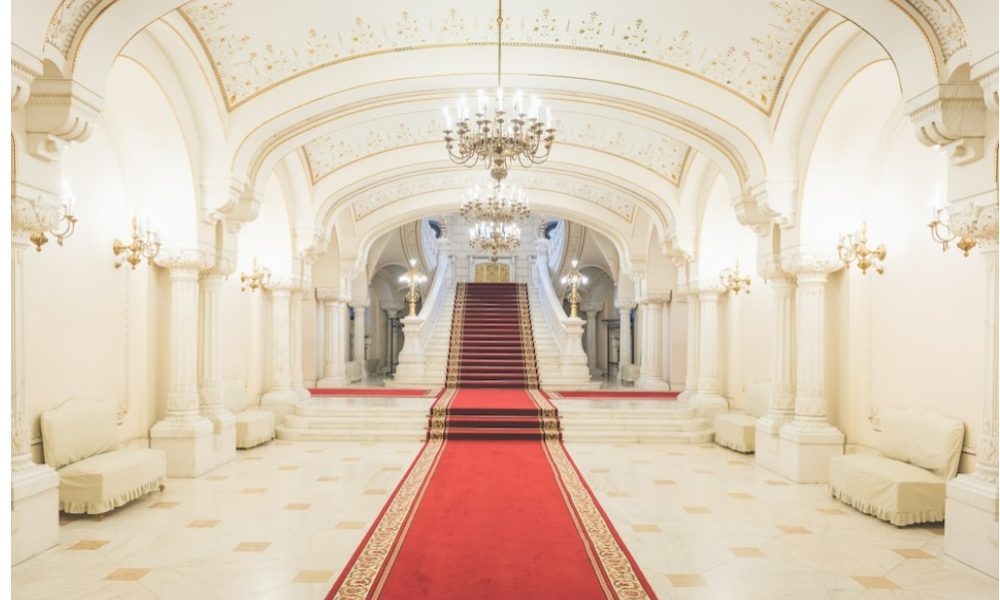The old people of the Old Bucharest: Roemerii

One of the urban trades practiced in the old Bucharest was that of framing the paintings and photographs, a profession executed by a frame, which survives, until today.
Among the few researchers who signed studies regarding this profession are the art historian Petre Oprea. He has published an article dedicated to the frames of paintings used between the 19th-XX centuries, an interval that interests us. Considerably restricting the interest on the frames for the easel works of painters such as Aman, Tattarescu, Grigorescu, Andreescu, Luchian and. a. Masters of modern Romanian art, Oprea does not forget to specify some context details. For example, we find out that the frame was called, then, a quadrum or windows. In addition to the aesthetic function, the role of the sill was to isolate the works, exposed in the past very close to each other. Not only the artists, but also the collectors have developed a special interest for a certain type of frame or for a certain employer, such as Nicolae Grigorescu for Florian.
But what about the rest of the two -dimensional objects that had to be framed, such as photos, postcards or even embroidery? Looking at the vintage images that capture the interiors of the Nicolae Minovici Museum, in the girl’s room, we can see a series of embroidered embroidery, some of them coming from the « La Bronze » Workshop.
The frames with a narrow and polished edge are decorated in relief with a variation of the motif of the rope. They fit the rich embroidery, made on thin canvas, reminiscent of the ornamentation of the costume with royal influences in Argeș and Muscel. On the back, the frames keep two stamps until today: the first presents Roemer’s company, and the second, the date of framing, as follows:
- « Ernst Roemer/ Magasin and workshop of frames and gallantry/ at the bronze frame/ Bucharest Strada Carol I 20/ founded in 1855 »; 2. « Ernst Roemer/ 6 Noe. 1910 ».
The store was therefore in Carol I. Street not to be deceived, however: it is the current French street, located in the historical center of the capital, and not by Carol I. Consulting Boulevard The yearbooks of Bucharest During the years 1885-1898, we find that Ernest Roemer’s store was among the gallantry until 1893, the year in which it is framed by the section of galleries, frames, windows and paintings. Therefore, we notify a recognition of its specialization, even if the store will continue to market and repair the gallantry. By the end of the 19th century, the address of the store was on Carol I street no. 24. Starting with 1890, it could be found at no. 20 of the street.
Founded in 1855, the store was equipped with its own production workshop for bronze and wood carved frames for photos and paintings. At the same time, here you could find « a rich assortment of gallantry and embroidery articles », such as: « Wall, paravane, Portmontre, portfolios (SIC), ports and ports », boxes for jewelry and silverware, boxes and rolls for plans and other woods, wood, cartons (pastures) for drawings. At the same time, the workshop offered repairs « with modest prices ».
In the press, we find details about the store until the interwar period. For example, in 1934, we notice that the address of the old paintings and frames is located in Str. Carol 16, around the Central Post, bearing another name – Michelangelo – maybe to attract more plastic artists. In 1939, we read in an announcement from the small advertising about « the largest and assorted store with frames » where « national embroidery is mounted ».


Oscar Roemer is another classroom that has worked in the mid-19th century (in 1850, as stated in an ad). At the end of that century, the classroom could be found in Carol I street at no. 30 (respectively, no. 26 of 1890), opposite the Church of St. Dumitru. The new store was « matched with different frames and windows for framing photos and paintings as well as a workshop for gallantry works, velvet, tips, etc. ». There were also « different leather objects, tiles and wood carved for holiday gifts », as well as painted mirrors for toilets. The workshop repairs the fan and any gallantry thing « with the most modest prices ». Nor were the bronze frames missing, the resemblance between the products offered and even the name suggesting a possible family of traders. Since the 1920s, the workshop was moved to Batteriilor Street no. 13. The last mentions in the press appear in 1941.
Last but not least, from 1925, another frame shop, belonging to the successors Roemer (so the second generation of the family), could be found in Calea Victoriei 112, near the White Church. At the end of the same year, the art chronicler Stefan Nenițescu pointed out that « a completely new room » hosted the caricular exhibition of the graphic artist Aurel Jiquidi. Although he tried to expand his ray of activity, opening an exhibition hall for the purpose of marketing art works, the workshop had an ephemeral duration, operating at this address until 1930.
This small history places the activity that crosses the half of the 19th century towards the interwar period of almost forgotten traders, the belongings of a lost multi-ethnic Bucharest. The gallantry products as well as the frames marketed by Roemer corresponded to the new tastes and requirements manifested by the inhabitants of the capital and not only since the 19th century.
Article written by Mădălina Manolache, museographer Nicolae Minovici, Urban Anthropology Section, Bucharest Municipality Museum
Sources:
The yearbooks of Bucharest on the years 1886-1898, 1906
George Potra, Bucharest yesterdayVol. I, scientific and encyclopedic ed., Bucharest, 1990
Lelia Zamani, Merchants, merchants and merchants in the old BucharestPublishing House, Bucharest, 2009
Little advertising from The truth, the current, the morning, the ramp, the universe
Petre Oprea, « Contributions to the history of paintings in our country (19th-XX centuries) », in Prospects in Romanian art XIX-XXLitera Publishing House, Bucharest, 1973
Ștefan. I. Nenițescu, « Artistic Chronicle. Nine Romanian graphics », truthDecember 1926
The post The old people of the Old Bucharest: Roemerii appeared first on Daily ro.







/s3/static.nrc.nl/wp-content/uploads/2025/06/16050831/ANP-529983991.jpg)